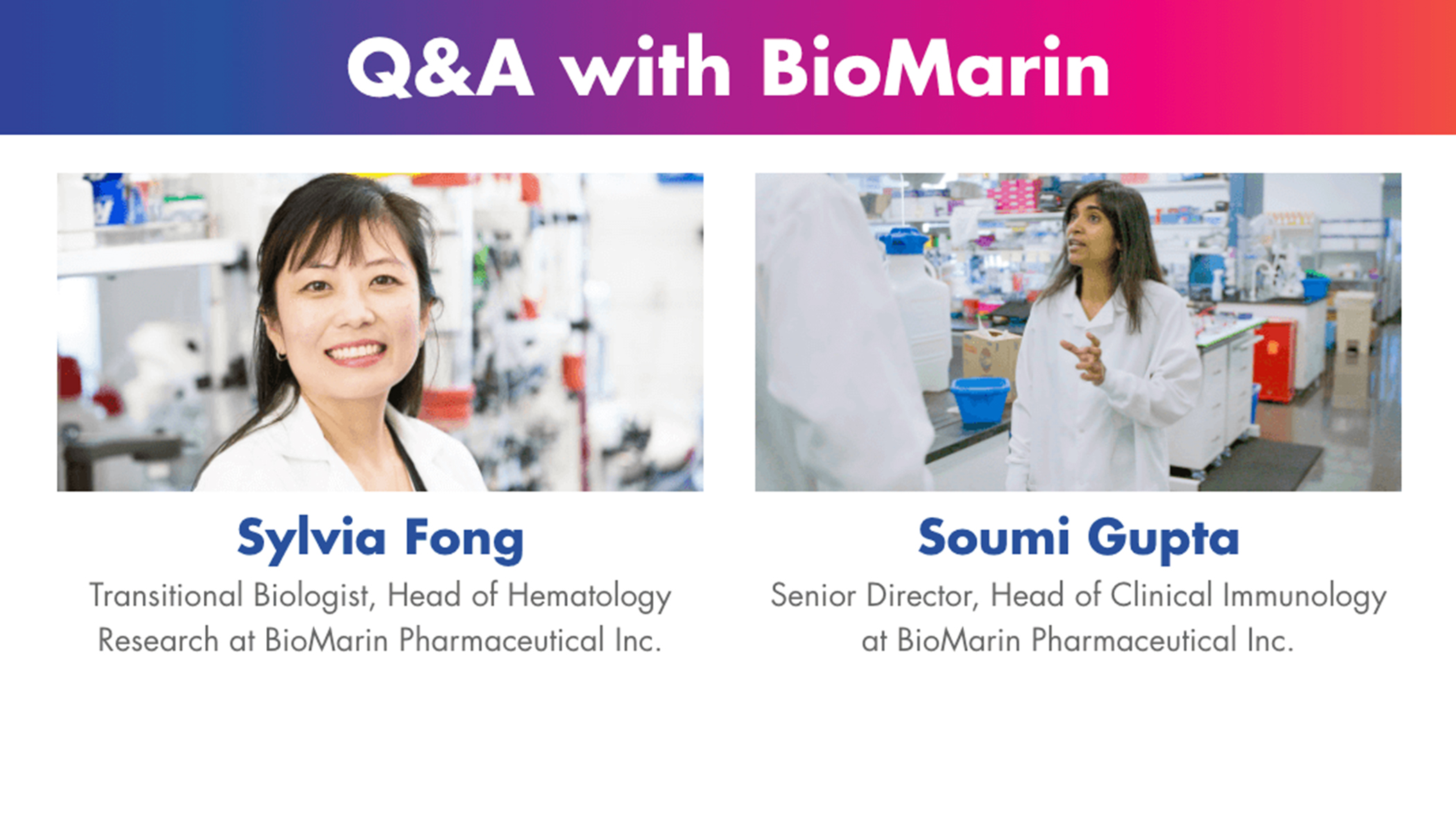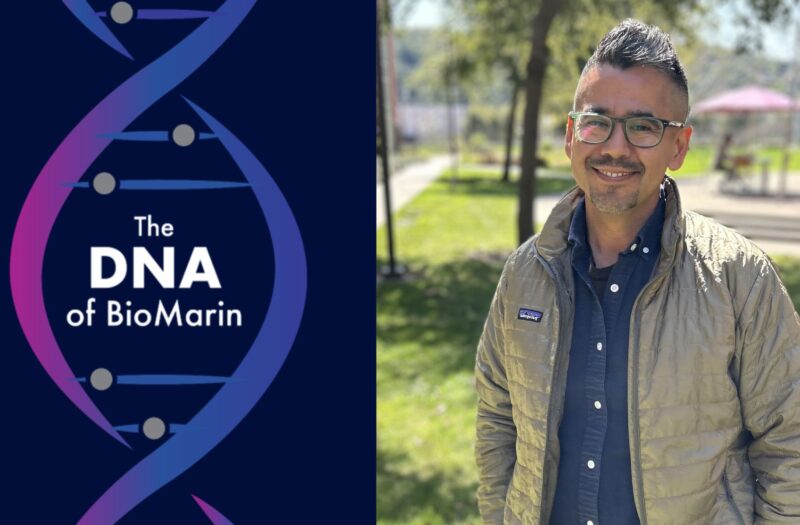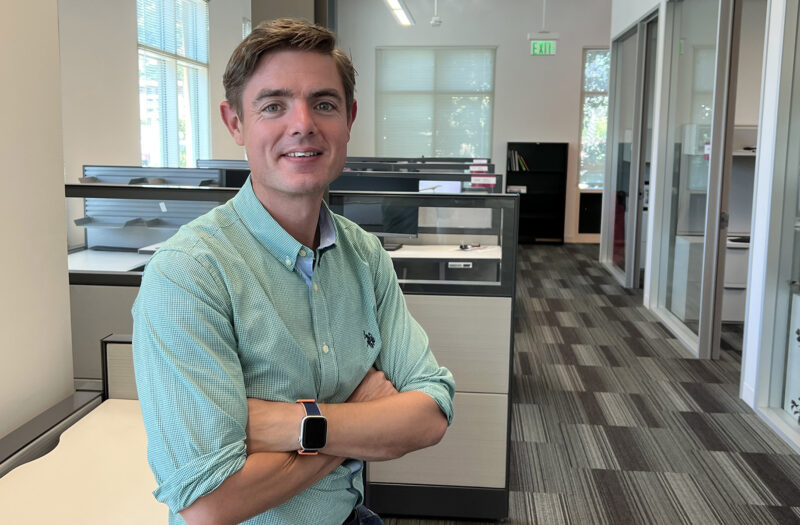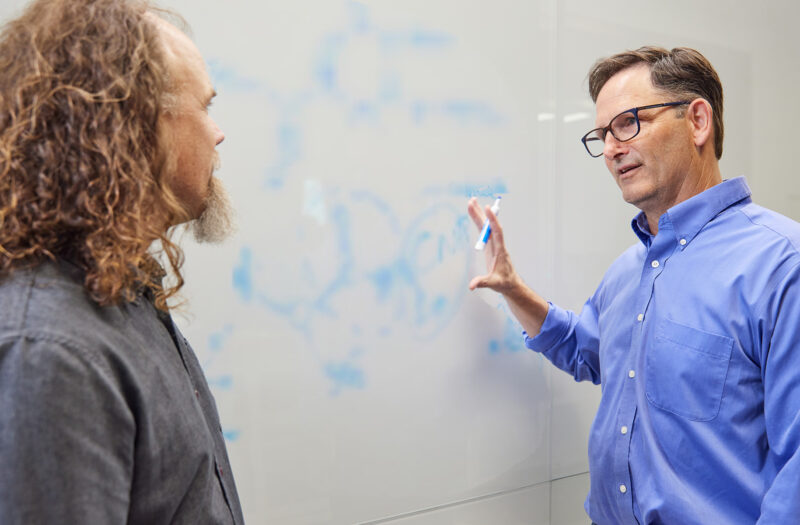BioMarin Scientist Spotlight: Drs. Sylvia Fong & Soumi Gupta Discuss the Significance of AAV Therapies
September 28, 2022
By interrogating the human genome, we’ve designed therapies that address the root cause of genetic disease. That’s a guiding principle for how we approach our research at BioMarin, and nowhere is that more true than in our work researching gene therapy. As part of our commitment to expanding our technical expertise, we’re looking into many aspects of gene therapy to better understand aspects of this groundbreaking treatment approach that remain a challenge for the scientific community. Learn more about that in our newest publication in Nature Medicine. But first, we’re excited to feature Sylvia Fong and Soumi Gupta, two of our scientists eager to share with us more about what’s at the cutting edge of gene therapy research.
Sylvia and Soumi, thank you so much for joining us today! Can you briefly introduce yourselves and describe your roles at BioMarin?
Soumi Gupta: I’ve been at BioMarin for a little bit over six years. Currently, I lead the clinical immunology group, where our primary responsibility is to characterize immune responses to our potential therapies, their impacts on safety and efficacy, and what adjustments can be made to improve the risk/benefit profile of each candidate medicine.
Sylvia Fong: I’ve been with BioMarin almost 9 years. I feel like I’ve had a few lives here: I was brought in to work with the valoctocogene roxaparvovec team, on our investigational gene therapy for hemophilia A, where I was responsible for developing the assays for preclinical and clinical studies. Now I’m in a different part of research & development, focused on earlier research, but I continue to work with the gene therapy research team in trying to answer questions related to AAV gene therapy.
You both have a lot of impact on what we’re doing in AAV gene therapy. Can you tell us more about the different studies you’re working on in that area?
SF: BioMarin teams currently have about 58 ongoing studies across six areas of AAV gene therapy research where the scientific and patient advocacy communities have a lot of questions. These focused areas are eligibility, predictability/variability, durability, dependency on prophylaxis, safety, and re-dosing. Redosing is an emerging area of research, but we strive for staying at the fore of all potentially relevant areas of research.
SG: In my team, we are trying to understand what role the immune response to the AAV plays in each of these areas and how can we overcome it. Regarding eligibility, currently enrollment is largely restricted to those patients that don’t have preexisting immunity to the type of AAV (AAV5) that’s used as a vector for the therapeutic gene. So our partners in bioanalytical sciences have worked with a partner to develop a companion diagnostic to help screen patients for that immunity. This is of interest because it could have implications for expression of the desired protein being targeted by the gene therapy.
Ultimately though, we are trying to understand the important determinants of preexisting immunity that impact expression to help us identify if there is a subset of patients with pre-existing immunity that can be safely dosed with AAV gene therapy. We are also engaged in non-clinical studies to assess interventions that may allow us to overcome preexisting immunity. Additionally, we are trying to understand whether and how the immune response plays a role in variation of protein expression across patients. Is variability due to an immune response? And if so, an immune response to what, specifically?
SF: Yes. And what we’re really trying to understand is what factors within individual patients could lead to variability and durability in expression. Their immune responses are one component of it, but there are many others. That’s really what my group is focusing on. Our belief is that once you identify the mechanism, you then can do something about it.
With the study we just published in Nature Medicine, we wanted to find out how long the AAV-delivered transgene would persist in the liver, as well as assess safety and the factors that cause response variability from person to person. We typically rely on clinical data to understand safety and efficacy and we’ve been excited to see a lot of data from our trials, but we still had a lot of biological questions about the fate of the gene therapy once it reaches the liver that we could only answer by analyzing liver tissue directly. Liver biopsy data are difficult to capture due to the invasiveness of the procedure, but thanks to the altruism of our study participants and their eagerness to contribute to the body of knowledge around this therapeutic option, we had the rare and exciting opportunity to analyze biopsy samples. Our analyses revealed the liver cells did contain the therapeutic DNA, with higher levels in participants who received higher doses, as we’d expect.
SG: Yes. And to speak to the safety piece, one dogma that has existed in the field of AAV gene therapy is that a T-cell response against the AAV capsid leads to the ALT and AST elevations that have been observed along with decreases in transgene expression. We’ve been studying this extensively, both preclinically and in clinic, and we found that contrary to the T-cell hypothesis, we don’t necessarily see a clear association with a cytotoxic T-cell response and ALT/AST elevations. So, we are trying to, as Sylvia said, go back and ask what is causing those elevations, if not T-cells? There’s a bigger mechanistic story here that we’re trying to understand and address.
Once you identify the mechanisms at play, what do you do next?
SG: In general terms, you would start to think strategically about the safest options for modifying the immune response, it’s trigger, or both. Our prophylactic steroid study is one example of that. Going forward, what we learn through the study of clinical immunology can help guide therapeutic development in many ways, to continue to give us the best chances of improving clinical outcomes.
Is that what happens in BioMarin’s Center of Technology?
SG: Yes! We partner with the Center of Technology closely. One example is our work with the Flow Core group, which is helping us use flow cytometry to test the hypothesis that using liver-directed gene therapy could induce immune tolerance to patients who are using factor VIII replacement therapy, which is another area of research we are pursuing. We’re also looking at various assays to monitor and measure cytokines, because it’s difficult to come up with an assay that we can use in the clinic that is sensitive enough and specific enough to do so.
To wrap this all up, has your thinking about gene therapy changed after all this time?
SG: Yes, tremendously. We are still just scratching the surface, but I think that we are absolutely at the forefront of the gene therapy. I do not believe that there is any other company that is doing nearly the amount of work that we’re doing in trying to understand the mechanisms, which contribute to the different aspects like safety and efficacy and variability durability.
SF: There are challenges and unknowns that need to be addressed with gene therapy, but I think we’ve done and learned a lot in the past 9 years and we are leading the science regarding AAV gene therapy. I believe gene therapy has the potential to transform lives of many people with severe genetic diseases. The key for success in gene therapy is ongoing investment in understanding and improving the technology so that we can better serve our patients.



